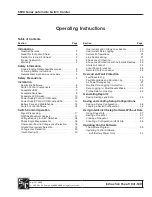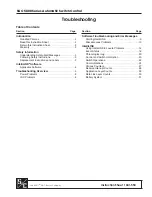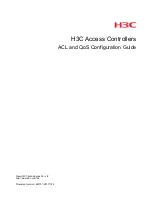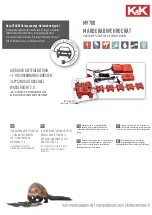
−12−
6.1 Message Transmission Modes
There are two modes of message transmission, RTU (Remote Terminal Unit) and ASCII, which can be
selected by key programming.
(Table 1 Comparison between RTU and ASCII modes)
Item
RTU mode
ASCII mode
Interface
RS-485
Interface(At the time of line converter use)
RS-232C, RS-422A
Communications system
Half-duplex start-stop synchronization
Transmission speed
9600, 19200bps
Character code
Binary
ASCII
Vertical Parity
Error check
Horizontal CRC-16
LRC
Start bit
1 bit
Data bit
8 bits
7 bits, 8 bits
Parity bit
Disabled, even, odd
Disabled, even, odd
Character
Configuration
Stop bit
1, 2 bit
Message start code
None
: (Colon)
Message stop code
None
CR, LF
Data time interval
28 bit-time or less
1 second or less
6.1.1 Transmitted data
The RTU-mode data is transmitted in binary numbers. In ASCII mode, the 8-bit binary data of RTU is
separated into higher-order 4 bits and lower-order 4 bits and both are turned into characters (0 - 9,
A - F).
Example) RTU mode
ASCII mode
67H
36H (“6”)
89H
37H (“7”)
ABH
38H (“8”)
39H (“9”)
41H (“A”)
42H (“B”)
Length of the RTU-mode message is half that of an ASCII-mode message, ensuring a more efficient
transmission.
6.1.2 Message frame configuration
The RTU-mode data consists only of a message section.
The ASCII mode data consists of a start character [: (colon, 3AH)], a message and a stop character
[(CR (carriage return, 0DH) + LF (line feed, 0AH) ].
RTU
ASCII
Message
:
Message CR
LF
The ASCII mode has the advantage of easier troubleshooting because its message has a start character [ : ].















































